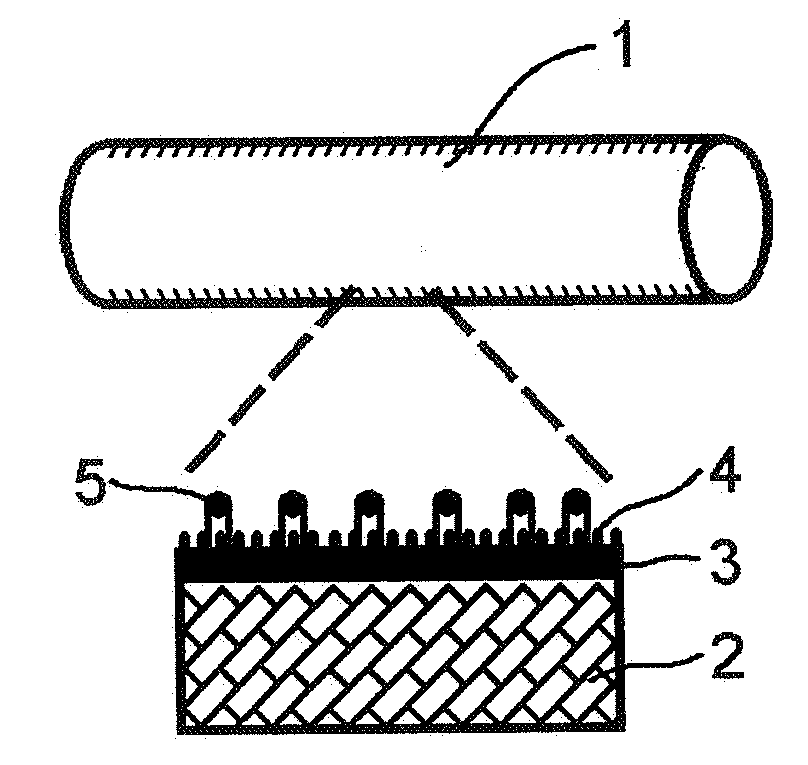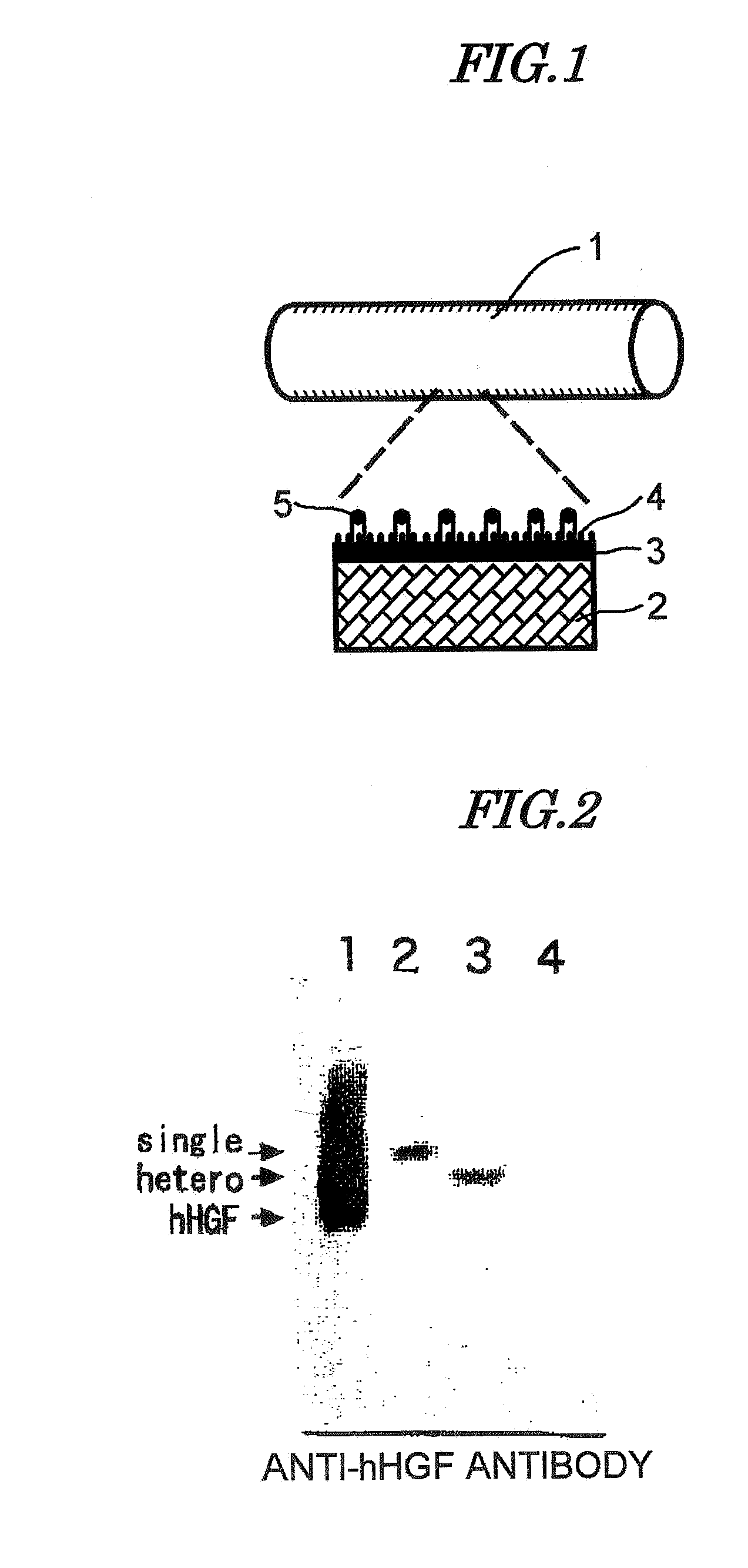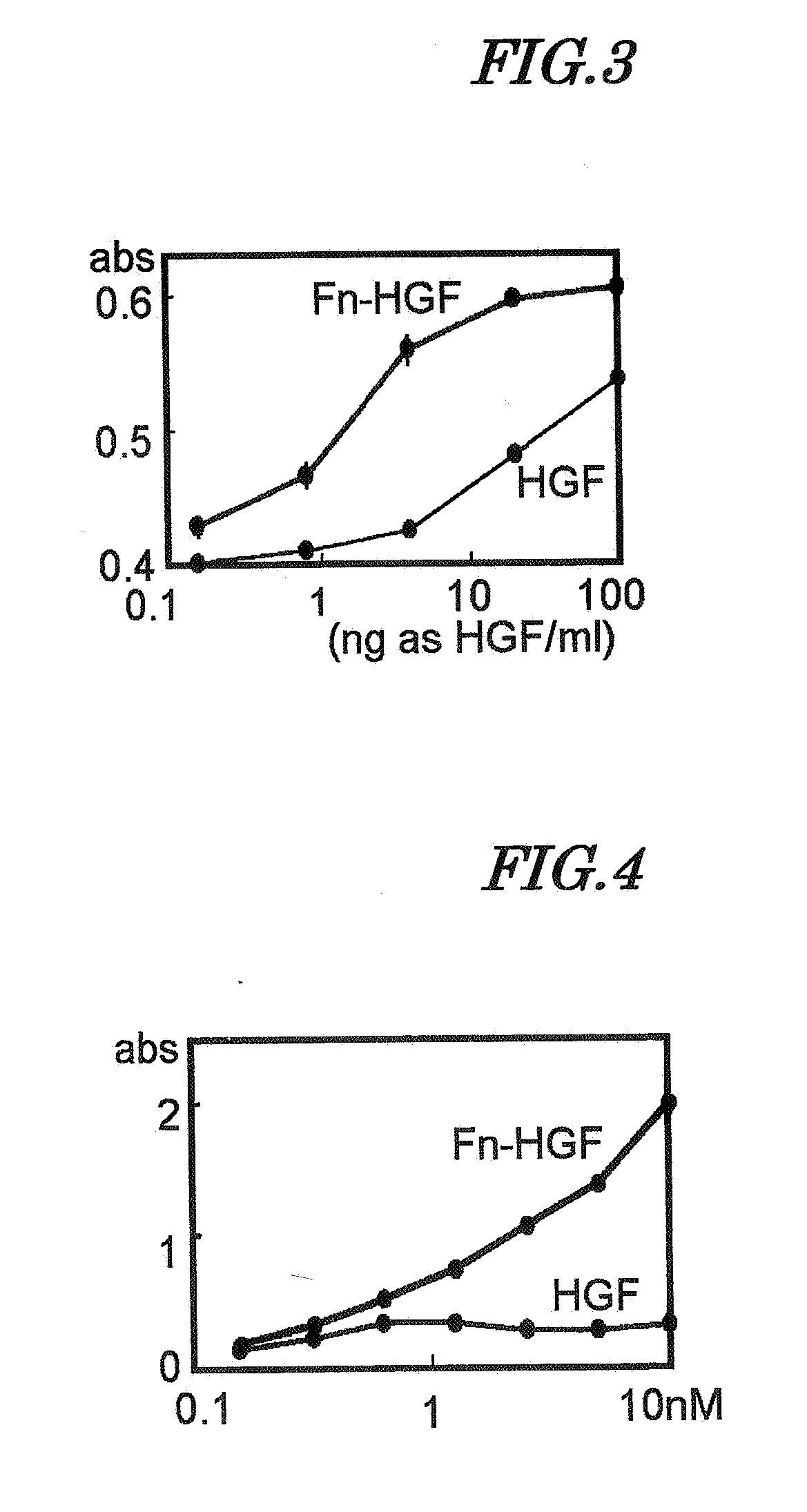Artificial Blood Vessel
a technology of artificial blood vessels and blood vessels, applied in the field can solve the problems of delayed application of small-diameter artificial blood vessels having an internal diameter of 4 mm or less, unpractical use of artificial blood vessels, and inability to apply, etc., to achieve the effect of not affecting the activity of protein and simple preparation method
- Summary
- Abstract
- Description
- Claims
- Application Information
AI Technical Summary
Benefits of technology
Problems solved by technology
Method used
Image
Examples
example 1
Production of HGF Fusion Protein (Fn-HGF)
A) Design of HGF Fusion Protein (Fn-HGF)
1) HGF Gene Sequence
[0078]As the HGF gene sequence, one disclosed in JP-A-6-9691 was used. This sequence was cloned as a gene coding for a protein exhibiting angiogenic activity, which is produced by a cell line (HUOCA-II and III) established from a human ovarian tumor, and when its base sequence was determined, it was identical to the sequence of HGF reported by Miyazawa et al. (BBRC. 169, 967-973 (1989)). By using this sequence as a template, a sequence coding for mature HGF polypeptide was obtained by a PCR method. The PCR primer had a sequence coding for the enterokinase-recognizing amino acid sequence DDDK (D=aspartic acid, K=lysine) added thereto, and this gave a gene coding for a protein having the enterokinase recognition sequence linked to the amino terminal of the mature HGF sequence. The gene sequence thus obtained was digested by Sal I and BamH I restriction enzymes and linked to pBlueScript...
example 2
Production of PAU
[0094]PAU was synthesized in accordance with a method described in Example 1 of JP-A-2001-136960. That is, 980 g of polytetramethylene ether glycol (OH value 57.35) and 174 g of tolylene diisocyanate (a mixture of 2,4-tolylene diisocyanate and 2,6-tolylene diisocyanate, 2,4-tolylene diisocyanate 80 wt %) were reacted at 70° C. for 5 hours, thus giving a urethane prepolymer having a terminal isocyanate group (NCO equivalent 1165). 58.2 g of the urethane prepolymer and 58.2 g of γ-methyl-L-glutamate-N-carboxylic acid anhydride were dissolved in 394.3 g of dimethylformamide (DMF), and a solution formed by dissolving 1.375 g of hydrazine hydrate in 20 g of DMF was added dropwise thereto to effect a reaction, thus giving a polyamino acid urethane copolymer (PAU) solution (20% concentration DMF solution) having a viscosity of 18500 cp / 25° C. The average degree of polymerization of amino acid chains was about 62 when calculated based on the reactivity between a primary ami...
example 3
Grafting onto HGF Fusion Protein-Immobilized Artificial Blood Vessel
[0101]The artificial blood vessel, prepared in Example 2, onto which HGF fusion protein was immobilized (addition concentration 64 μg / mL), was replacement grafted to a lower limb femoral artery of a beagle dog. After a 3 cm long artery was removed, a 3 cm long artificial blood vessel was suture-grafted. 1, 2, and 4 weeks after grafting the artificial blood vessels were removed, formalin-fixed, and embedded in paraffin. The paraffin block was equally divided into 10 parts along the longitudinal axis of the artificial blood vessel, and a paraffin section was prepared from each part and stained with hematoxylin and eosin; from the results, no endothelial cells were observed on the inner surface of the artificial blood vessel after 1 week. For the sample after 2 weeks, endothelial cells were observed in a site up to about 3 mm from the anastomosis (upstream side) with the living blood vessel, but no endothelial cells we...
PUM
| Property | Measurement | Unit |
|---|---|---|
| Structure | aaaaa | aaaaa |
Abstract
Description
Claims
Application Information
 Login to View More
Login to View More - R&D
- Intellectual Property
- Life Sciences
- Materials
- Tech Scout
- Unparalleled Data Quality
- Higher Quality Content
- 60% Fewer Hallucinations
Browse by: Latest US Patents, China's latest patents, Technical Efficacy Thesaurus, Application Domain, Technology Topic, Popular Technical Reports.
© 2025 PatSnap. All rights reserved.Legal|Privacy policy|Modern Slavery Act Transparency Statement|Sitemap|About US| Contact US: help@patsnap.com



